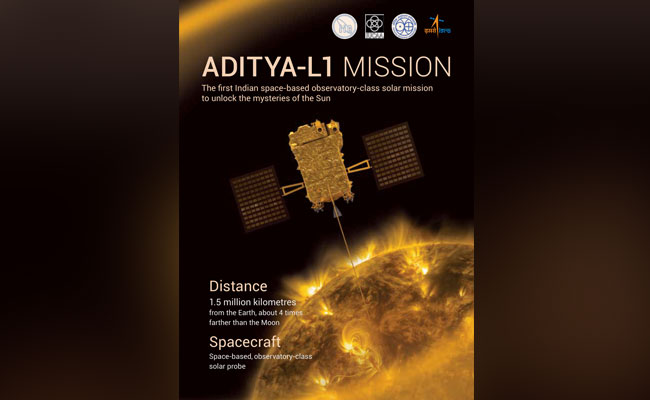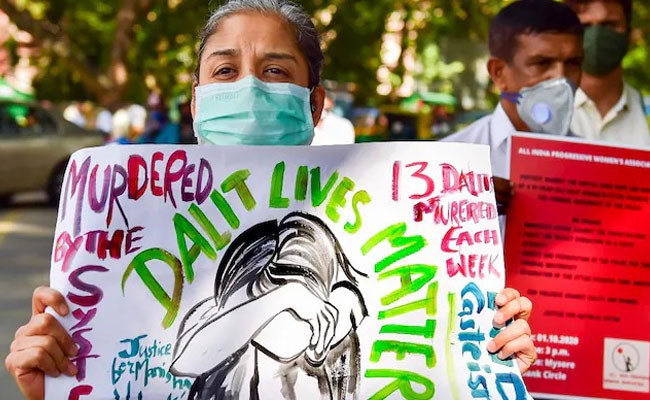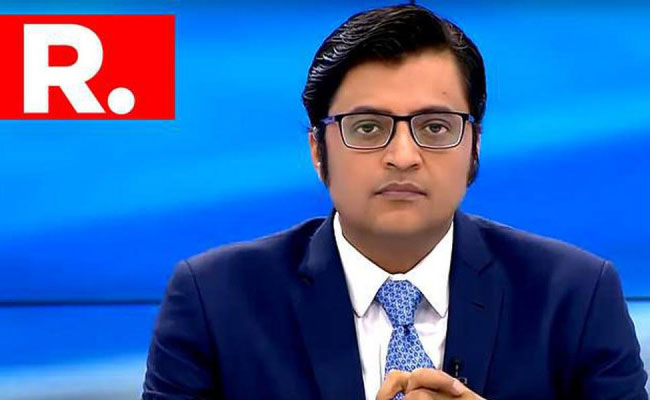Bengaluru (PTI): Ahead of India's Aditya-L1 solar mission, a top scientist said the monitoring of the Sun on a 24-hour basis is a must to study solar quakes which can alter the geomagnetic fields of earth.
The Aditya-L1 mission to study the Sun is slated to be launched at 11.50 am from the Sriharikota spaceport on Saturday.
Explaining the need to study the Sun, Professor and In-Charge Scientist at the Indian Institute of Astrophysics (IIA), Dr R Ramesh told PTI that just as there are earthquakes on Earth, there are something called solar quakes - called as Coronal Mass Ejections (CMEs) - on the surface of the Sun.
In this process, millions and millions of tons of solar materials are thrown into the interplanetary space, he said, adding these CMEs can travel at a speed of approximately 3,000 km per second.
"Some of the CMEs can also be directed towards the Earth. The fastest CME can reach near Earth space in approximately 15 hours," Dr Ramesh pointed out.
On why this mission was different from other similar ventures, he said, "Though ESA (European Space Agency) and NASA (National Aeronautics and Space Administration) have launched similar missions in the past, the Aditya L1 mission will be unique in two main aspects because we will be able to observe the solar corona from the place where it almost starts. Also we'll be able to observe the magnetic field changes in the solar atmosphere, which are the cause for coronal mass ejections or solar quakes."
Sometimes, these CMEs damage satellites by "engulfing" them, he said. Due to the discharged particle flow from the CMEs, all the electronics onboard satellites can malfunction.
These CMEs come all the way to Earth, Dr Ramesh said.
In 1989, for instance, when there was a massive eruption of the solar atmosphere, Quebec in Canada went without power for about 72 hours; And in 2017, the Zurich airport in Switzerland was affected because of CME for almost 14 to 15 hours.
Dr Ramesh said once the CMEs reach the Earth, which is like a big magnet with north and south poles, they can travel along the magnetic field lines and then they can alter the Earth's geomagnetic field. Once the geomagnetic field is affected, it can impact the high voltage transformers.
"So, it is very important to put a centre of observation to continuously monitor the Sun, which is possible from the Lagrangian (L1) point," he pointed out.
India is launching the Aditya-L1 to place its satellite at Langrangian-1 point.
According to him, the authorities at Bengaluru-based IIA, an institution with a long tradition of almost close to 125 years of observing the Sun, felt that they should monitor the Sun on a 24 hours basis so that any changes that are taking place (on the Sun) are very well observed.
Though observations of the Sun can be carried out with a ground-based telescope, they have two major limitations, Dr Ramesh said.
One is that there are only eight or nine hours available in a day to monitor the sun since such observations can be carried out only during day time and not at night.
The second challenge while monitoring the Sun from Earth is that the light coming from the Sun will be scattered by the dust particles in the atmosphere. As a result the image can get blurred, he explained.
To avoid these shortcomings in solar observation, the IIA felt the need to have a telescope in space for 24-hour uninterrupted observations of the Sun.
There are five vantage points from where the Sun can be monitored. These are called the Lagrangian points, which are named after an Italian astronomer Joseph-Louis Lagrange who discovered them.
The gravitational force of attraction between the Sun and the Earth at the Lagrange points are perfectly balanced, the scientist said.
"Of all these five points, there is a point called L1 to have an uninterrupted view of the Sun. This point is located between the Sun and Earth at a distance of 1.5 million km from the Earth," the IIA professor explained.
According to him, the Aditya L1 space mission will take 100-plus days to reach the Lagrangian-1 point.
Data from this satellite will be downloaded at ISRO's Indian Deep Space Network near Byalalu on the outskirts of Bengaluru and will be transmitted by a dedicated internet link to the Payload Operations Centre of the IIA, Dr Ramesh said.
The data will be processed and sent back to ISRO for dissemination to the general public as well as for use by the scientific community.
Let the Truth be known. If you read VB and like VB, please be a VB Supporter and Help us deliver the Truth to one and all.
Bagalkot: Pontiff of Basavagopala Neela Manika Mutt in Bandigani, Rabakavi-Banahatti, Annadaneshwara Swami died at the KLE Hospital, Belagavi, on Friday morning. He was 75.
The seer was reportedly under treatment at the hospital in Belagavi for a few days now.
His funeral rites will be held at the Mutt on Saturday evening. People are permitted to pay their last respects to the seer from 10 pm on Friday till 4 pm on Saturday.
Annadaneshwara Swami was honoured with the Trividha Dasoha and Karnataka Rajyotsava Suvarna Sambhrama – 2024 Award.





